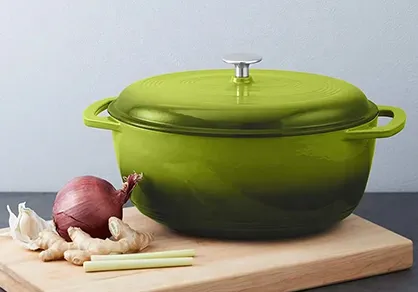
Essential Guide to Choosing a Cast Iron Skillet for Your Camping Adventures
The Ultimate Guide to Using a Cast Iron Skillet for Camping
When it comes to outdoor cooking, nothing beats the versatility of a cast iron skillet. Ideal for camping trips, a cast iron skillet can handle a wide range of cooking methods, from frying and sautéing to baking and even grilling. Its durability, heat retention, and natural non-stick properties make it an indispensable tool for any camping enthusiast. Here's why you should consider bringing a cast iron skillet on your next outdoor adventure and some tips for using it effectively.
Why Choose Cast Iron?
1. Durability Cast iron skillets are incredibly robust. With proper care, they can last for generations, making them an excellent investment for outdoor cooks. Unlike other cookware that may warp or break under harsh conditions, a cast iron skillet can withstand extreme temperatures and rough handling.
2. Heat Retention One of the standout features of cast iron is its ability to retain heat. This property allows for even cooking, which is especially important when grilling over an open flame or using a campfire. You can sear meats to perfection, create crispy edges on vegetables, or bake a delicious cornbread without fear of uneven cooking.
3. Versatility A cast iron skillet can be used in a variety of ways. You can use it directly on an open fire, over hot coals, or on a camping stove. It’s perfect for breakfast meals like pancakes and bacon or hearty dinners like stews or casseroles. With a cast iron skillet, you can expand your camp menu dramatically.
Tips for Using a Cast Iron Skillet While Camping
cast iron skillet for camping

1. Preseason Your Skillet Before heading out, ensure your skillet is properly seasoned. A well-seasoned skillet not only protects it from rust but also provides a natural non-stick surface that enhances cooking. To season, rub a thin layer of cooking oil over the entire surface and place it in the oven at a high temperature for an hour.
2. Heat Management When cooking over an open flame, control the heat to prevent burning. It’s often best to start with a cooler spot on the grill or coals and gradually move the skillet to hotter areas as the food cooks. Remember that cast iron retains heat well, so be mindful of flare-ups.
3. Cleaning and Maintenance Cleaning a cast iron skillet in the wild requires a bit of care. Avoid soap, as it can strip the seasoning. Instead, wipe out food residues with a paper towel or a cloth. For stubborn bits, use a small amount of water and a spatula to scrape them off, then dry and apply a thin coat of oil to maintain the seasoning.
4. Storage When packing your cast iron skillet for camping, consider using a cloth or some paper towels between the skillet and other gear to avoid scratches. Ensure it’s completely dry before storing it to prevent rust.
5. Experiment with Cooking While camping, don't hesitate to experiment. You can use your skillet to bake biscuits, fry fish, or even roast veggies. Cast iron is forgiving and will help you create delicious meals, no matter your skill level.
Conclusion
A cast iron skillet is a camping essential that opens up a world of outdoor cooking possibilities. With its exceptional heat retention, durability, and versatility, it can make your cooking experience enjoyable and hassle-free. As you prepare for your next adventure, don't forget to pack your trusty cast iron skillet—it may just become the highlight of your camping cuisine! Happy cooking!
-
Season Cast Iron Perfectly with GPT-4 Turbo TipsNewsAug.01,2025
-
High Quality Cast Iron Cookware - Baixiang County Zhongda MachineryNewsAug.01,2025
-
Premium Cast Iron Pan: Durable & Perfect HeatNewsAug.01,2025
-
High Quality Kitchen Durable Black Round Cast Iron Cookware Pancake Crepe Pan-Baixiang County Zhongda Machinery Manufacturing Co., Ltd.NewsAug.01,2025
-
Cast Iron Cookware - Baixiang County Zhongda Machinery | Nonstick, Heat ResistanceNewsAug.01,2025
-
High Quality Kitchen Durable Black Round Cast Iron Cookware - Baixiang County Zhongda Machinery | Non-Stick, Heat Retention, DurableNewsJul.31,2025


